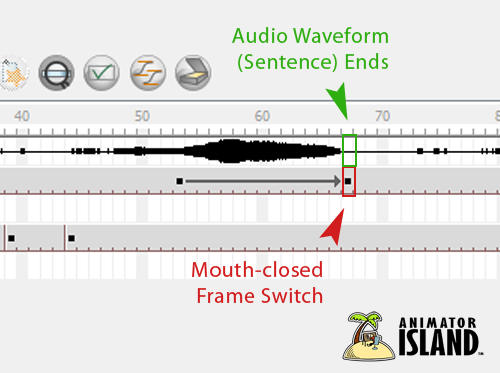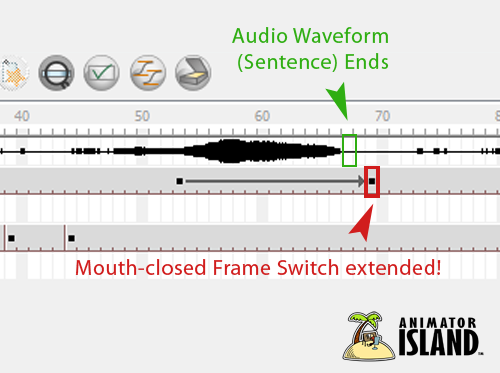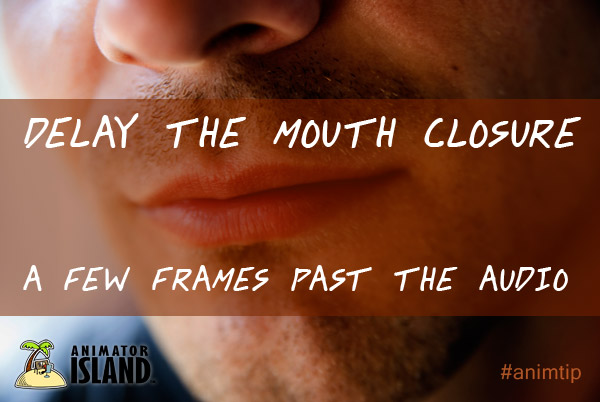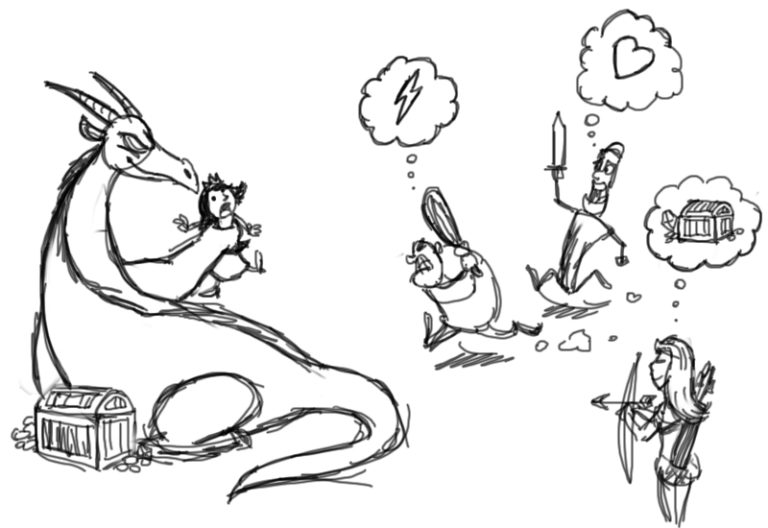A Lip-sync Must-Know for Limited Style Animation

Here’s a quick tip for any lip sync you’re doing in any limited-style animation. By extending your “open” mouth symbol/drawing a touch past when the audio ends, your character will feel more solid and the audio seems much more like it’s actually coming from the character’s lips.
Let’s look at a sample timeline and how this works:

As you can see here, the audio ends at Frame 67. Now, we could set the closed-mouth frame to happen simultaneously, and it would probably work just fine. This is the way many animators would time it, and there’s nothing inherently wrong with this method.
It could, however, be even better.
By extending the open frame a little past when the waveform ends, we mimic the tendency of humans in real life to keep the mouth slightly parted even after the vocal chords stop vibrating. This is usually done by moving the closed-mouth state two or three frames into the silence of the waveform. (In this example, Frame 69.)

This also has to do with the Sound in Animation principal, explained here. By leaving the visual on screen a hair longer than the audio, the two actually feel MORE synced in most cases.
You can experiment to get a feel for what works best, because sometimes you’ll find a 1-2 frame delay works well, but in other cases you may hold the open mouth as long as 5-6 frames past the audio. It depends on the pacing of the scene and what’s happening next, plus the speed of the phrase being spoken. It should be checked on a case-by-case basis, at least until you are comfortable with the technique and then you’ll find you begin to naturally know what will work best as you listen to the audio.

Note that this trick should be used at the end of sentences only, not every word. If the character is going to continue speaking, use the waveform as the guide to when you should switch to a closed-mouth symbol.
Exceptions
There are, as usual, a few exceptions to this trick.
- If the final sound is one that requires a closed-mouth symbol, for example an M sound as with the words “come” or “slam,” then you should put the closed mouth frame nearer to the actual end of the audio wave.
- If you are going to slowly close the mouth instead of going directly from open to closed, the transition (inbetween) will take the place of this extension, and to include both often makes things look visually mushy.
As stated before, you want to review this on an individual dialogue basis to be sure it works well for the character or style you’re shooting for. In most cases though, this simple change can dramatically affect the feel of your animation, and instantly breathe even more life into the characters on screen!







Very cool tip, thanks. I will try it.
Never heard of this one so thanks!
Very interesting technique. I do many stopmotion animation and I am wondering if this works there as well.
Only one way to find out! 🙂 I’ve not tried it for stop-motion, but I imagine it could work, depending on the level of detail you’re using and if it’s silky-smooth vs. more limited.
Yep, I do this all the time! Great tip!
This is great! Will try!